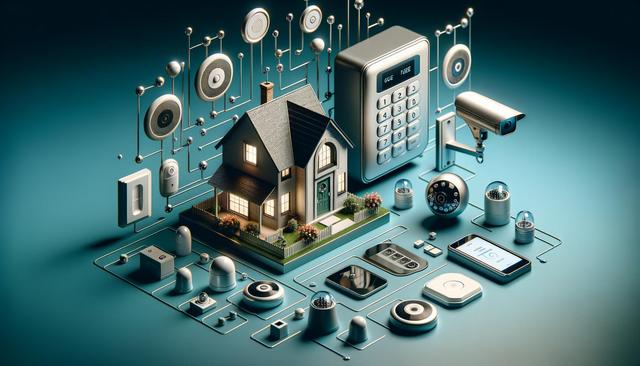
A Practical Guide to Home Security Systems
Understanding the Basics of Home Security
Home security systems are designed to protect your property by deterring unauthorized access, notifying you of incidents, and helping emergency services respond quickly. At their core, these systems include components such as sensors, control panels, alarms, and in many cases, surveillance cameras. Modern setups often integrate with mobile apps, giving users remote access to monitor their home from anywhere. Whether you live in a house, apartment, or townhouse, there are configurations available to suit different needs and budgets. Understanding what each component does is essential in choosing a system that fits your lifestyle and the level of protection you require.
Common elements of a home security system include:
- Entry sensors for doors and windows
- Motion detectors
- Surveillance cameras (indoor and outdoor)
- Alarm sirens
- 24/7 monitoring services (optional)
Some systems are Do-It-Yourself (DIY) and easy to install, while others may require professional setup. Knowing the difference helps you align your expectations and assess ongoing maintenance or monitoring costs associated with each option.
Benefits of Installing a Home Security System
Installing a home security system comes with a variety of advantages beyond just deterring break-ins. One of the primary benefits is peace of mind—knowing your home is being monitored, whether you’re asleep or away on vacation. Many systems also allow for real-time alerts, so you can stay informed if something unusual happens. This feature is particularly valuable for families, pet owners, or individuals who travel frequently.
Other significant benefits include:
- Potential savings on homeowner’s insurance
- Improved emergency response times
- Smart home integration for added convenience
- Remote access and control of your home’s security
Moreover, some systems offer environmental monitoring, such as smoke and carbon monoxide detection, which adds another layer of safety. While the upfront cost may vary, the long-term security and functionality can make it a worthwhile investment for many homeowners.
Choosing the Right System for Your Needs
Selecting the most suitable home security system depends on several personal and property-specific factors. Start by assessing the size of your home, the number of entry points, and whether you want to cover indoor, outdoor, or both areas. If you live in a high-traffic neighborhood or a remote area, your needs may differ significantly. It’s also important to determine if you want a system that includes professional monitoring or if you prefer to self-monitor using your smartphone or tablet.
Key considerations when choosing a system:
- Type of property (apartment, single-family home, etc.)
- Desired level of automation and smart features
- Budget constraints
- Ease of installation and maintenance
There are many providers offering customizable packages, and reading customer reviews can help gauge reliability and user satisfaction. It’s also wise to check if the system supports future upgrades or expansions, in case your security needs change over time.
Smart Features and Home Integration
Today’s home security systems often include smart features that go beyond traditional protection. Integration with smart home ecosystems allows users to control lighting, thermostats, locks, and cameras from a single interface. This connectivity not only increases convenience but also enhances security by automating responses to certain triggers—for example, turning on lights when motion is detected.
Popular smart features include:
- Voice control compatibility
- Geofencing for automatic arming/disarming
- Mobile alerts and live video feeds
- Integration with smart doorbells and locks
These features offer a high degree of personalization and can be particularly helpful for those with busy lifestyles. However, it’s important to ensure your internet connection and home network are secure, as these systems rely heavily on wireless communication.
Common Challenges and How to Address Them
Despite their many advantages, home security systems are not without challenges. False alarms, connectivity issues, and system malfunctions are among the most commonly reported problems. Regular maintenance and testing can help minimize these occurrences. Additionally, understanding your system’s settings and limitations can prevent unnecessary alerts.
To mitigate common issues, consider the following tips:
- Keep firmware and apps updated
- Ensure all sensors are properly installed and maintained
- Educate all household members on how to use the system
- Use strong, unique passwords for smart devices
It’s also advisable to have a backup power source or battery in case of outages. If you’re using a system with professional monitoring, make sure your account details and emergency contacts are up to date. A well-maintained system is more reliable and effective in safeguarding your home.


